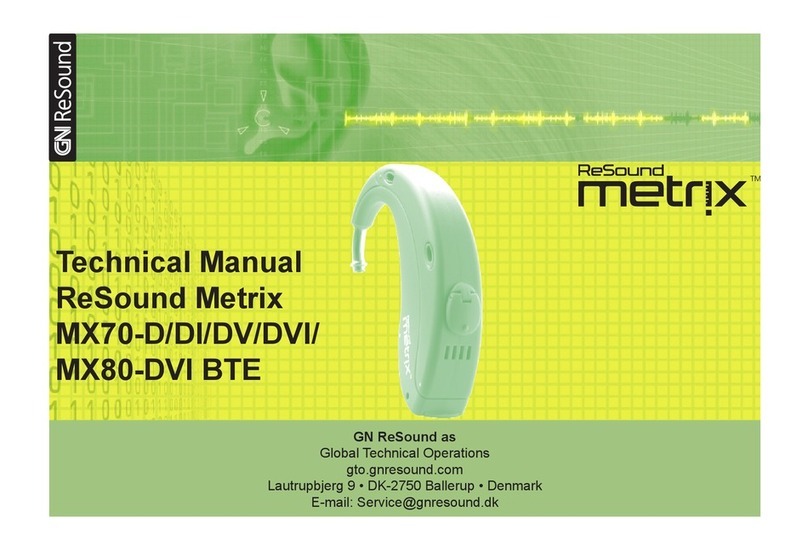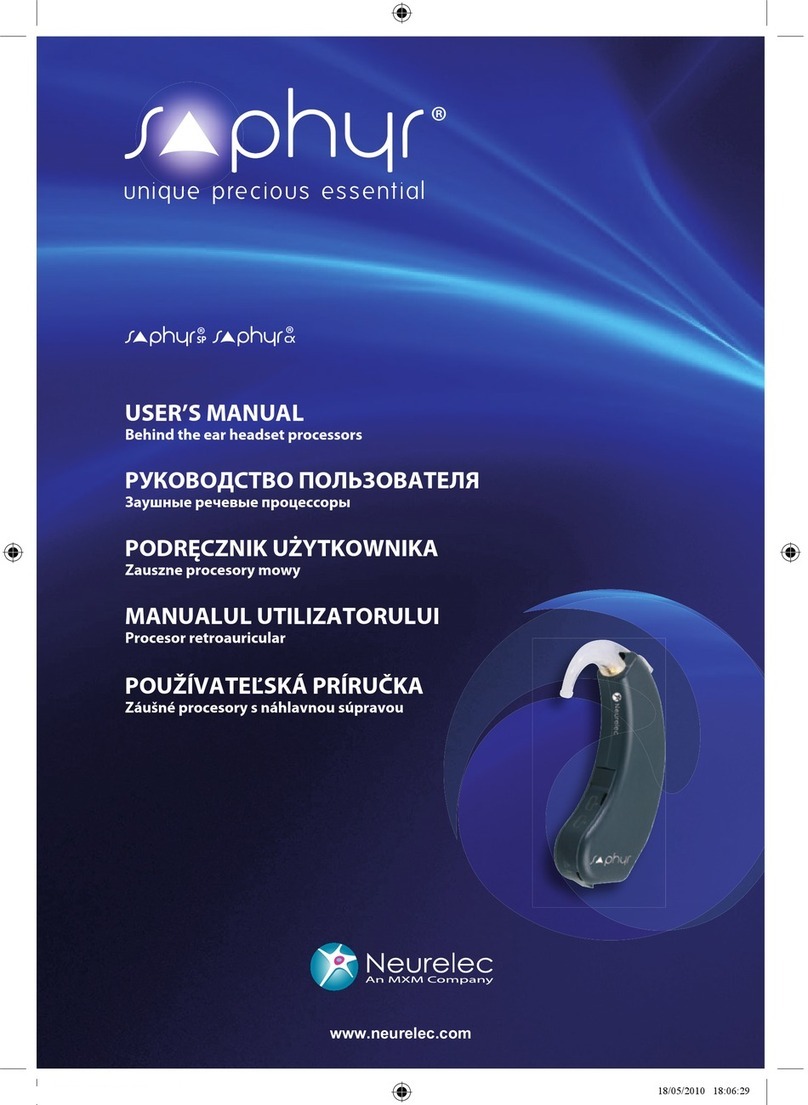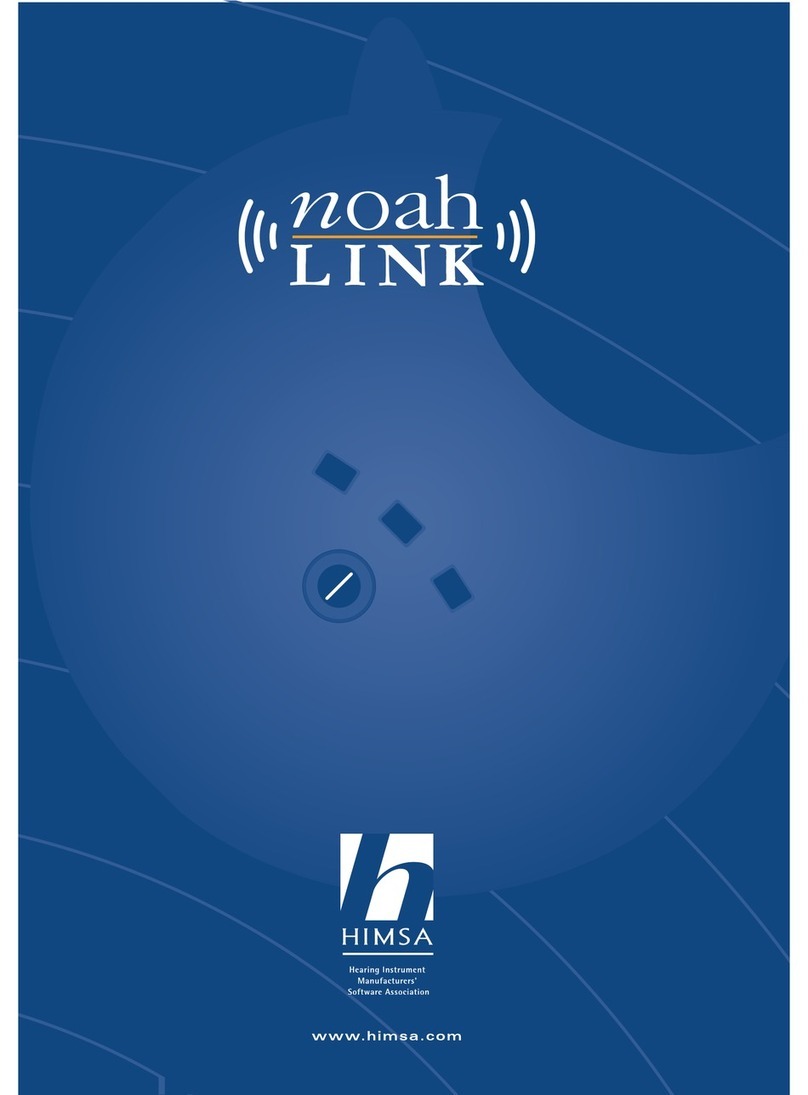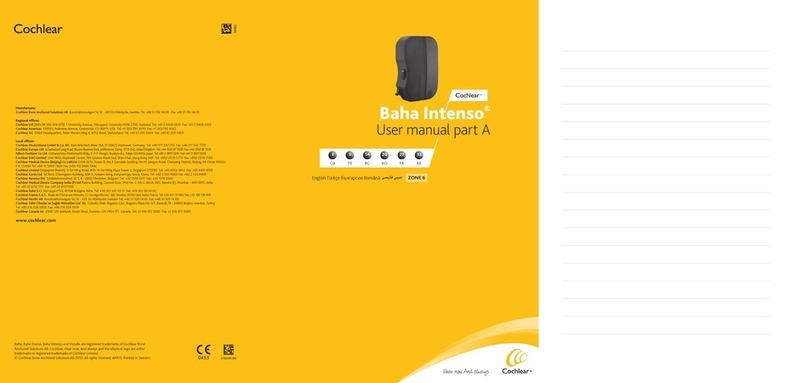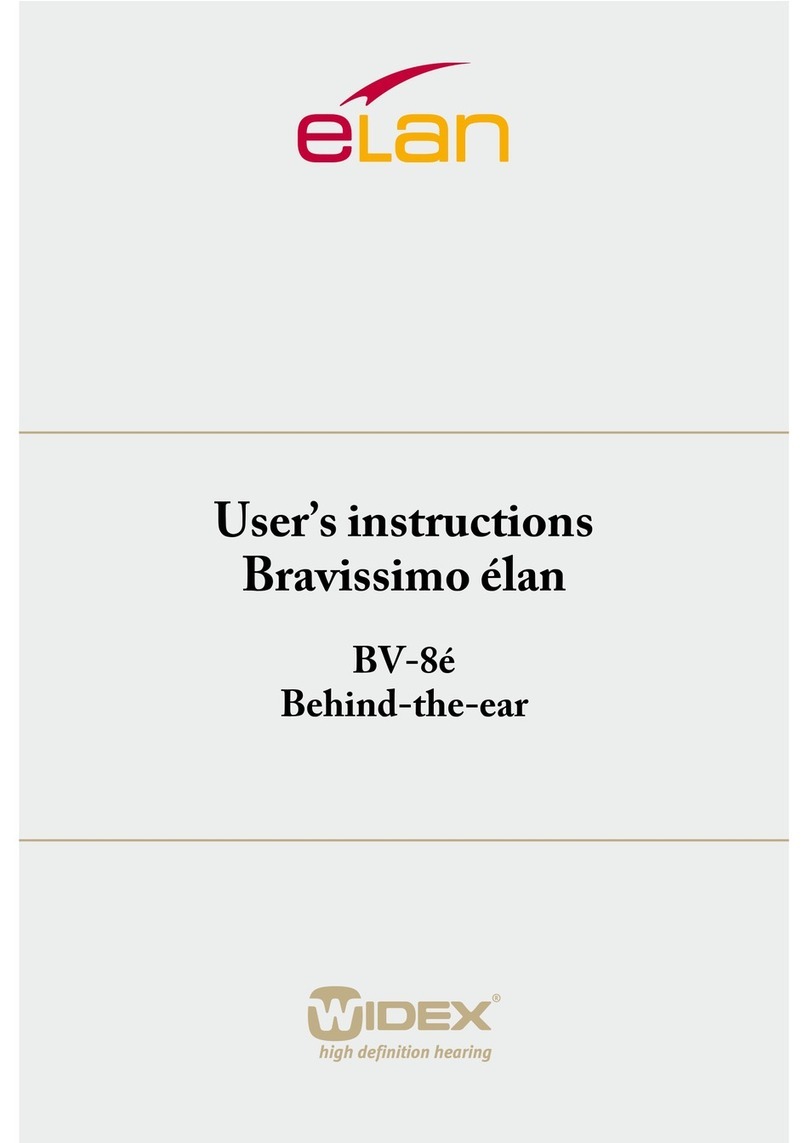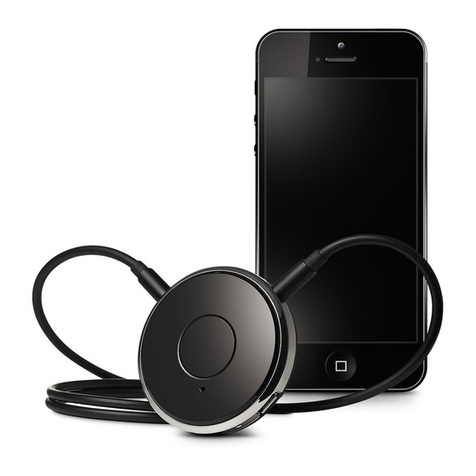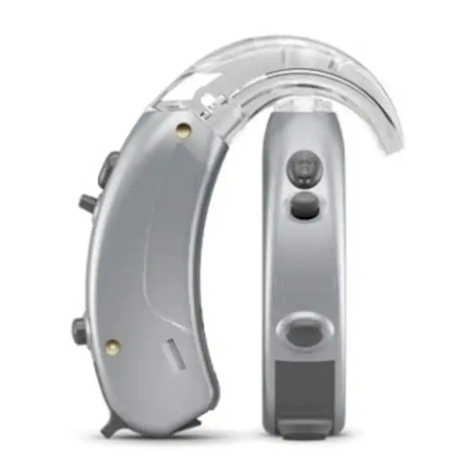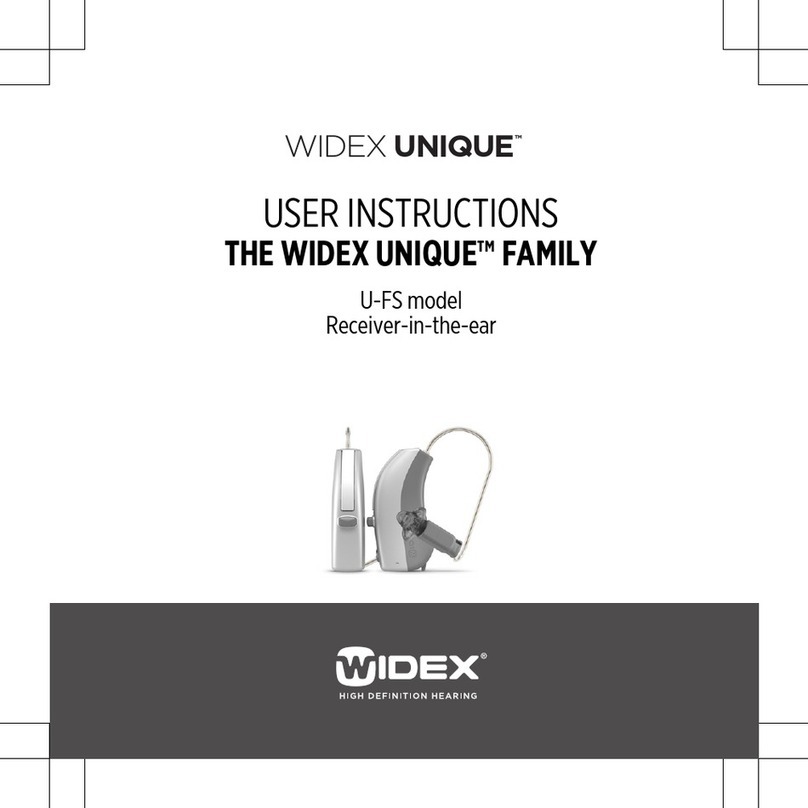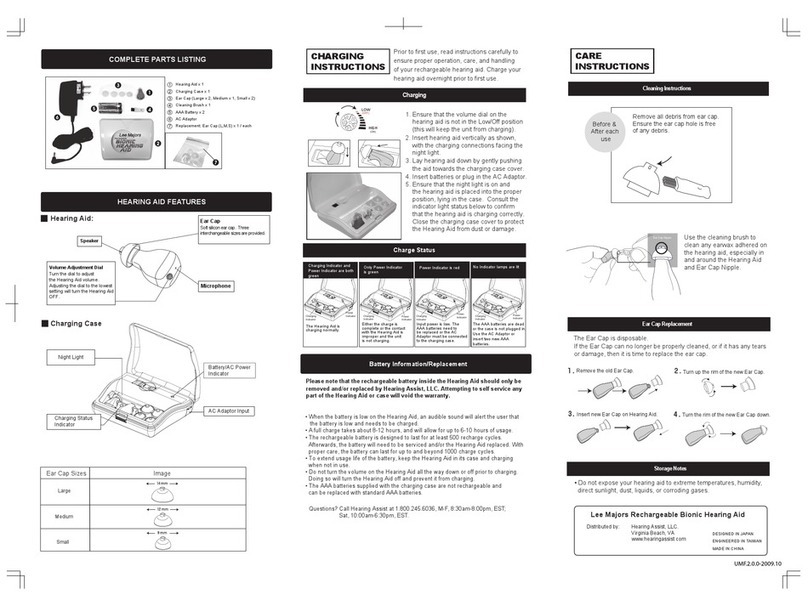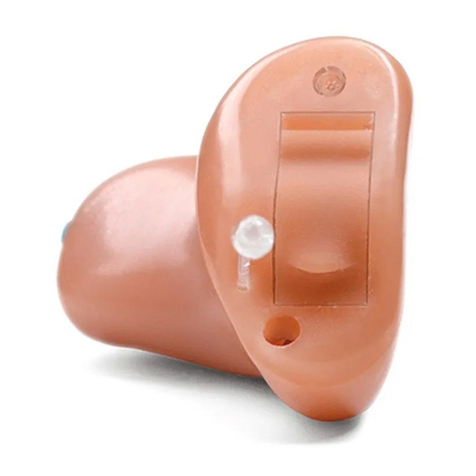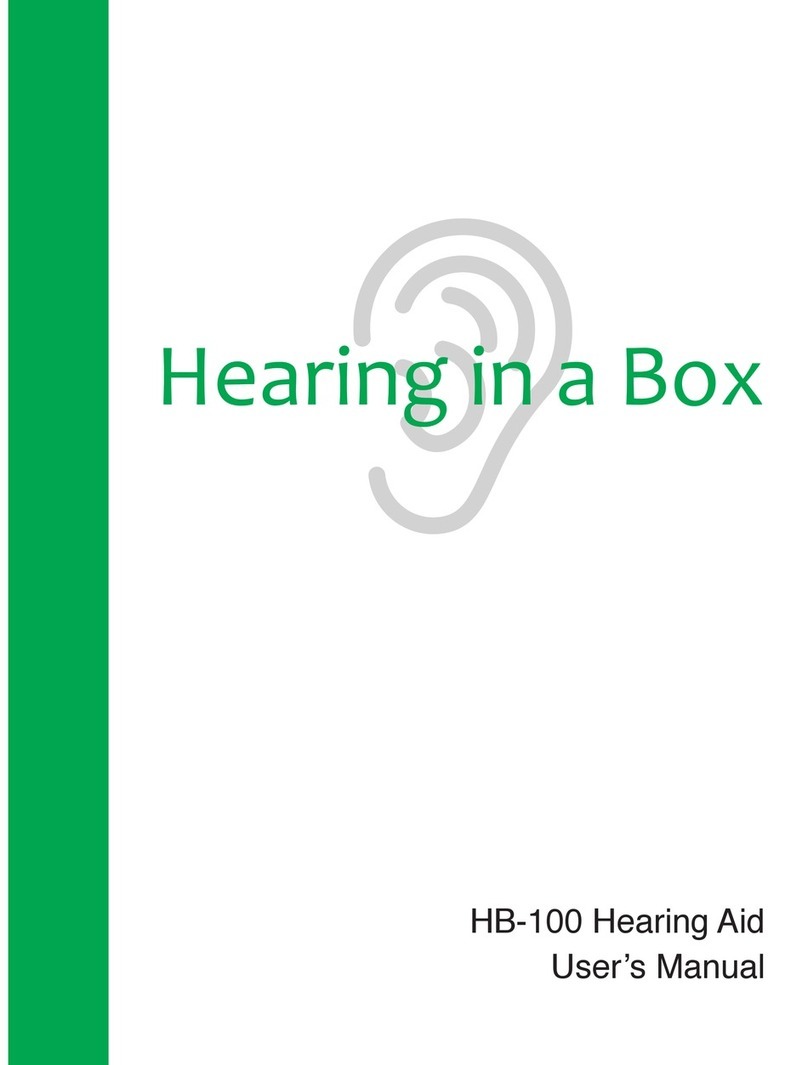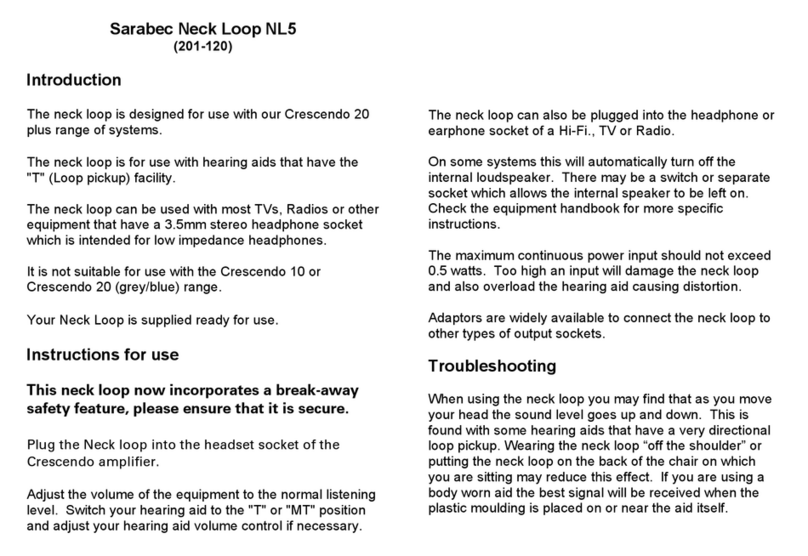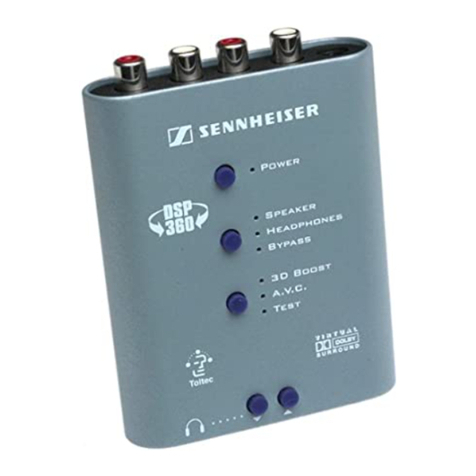GN ReSound as 88 User manual

User guide
ReSound Behind-The-Ear power hearing aids

Hearing aid information
Left hearing aid Right hearing aid
Serial number Serial number
Model number Model number
Battery type £High Power BTE Size 13 £Super Power BTE Size 675
Program Beep Description
1 One beep
2 Two beeps
3 Three beeps
4 Four beeps
2

Table of Contents
Introduction 5
Your hearing aid 6
How to get your hearing aid ready for use 8
How to place the hearing aids in your ears 15
How to remove the hearing aids from your ears 18
How to use your hearing aids 19
Direct Audio Input 30
Advanced options 34
How to clean and maintain your hearing aids 40
General warnings and precautions 46
Hearing aid expectations 49
Troubleshooting 50
Warnings to hearing care professionals (US only) 53
Tinnitus Management 56
Regulatory information 71
Technical specifications 79
Additional information 81
3

4

Introduction
Thank you for choosing our hearing aids. We recommend that you use your hearing aids every day.
This way you will fully benefit from them.
NOTE: Read this booklet carefully before you start using your hearing aids.
Intended use
Generic air-conduction hearing aids are wearable sound-amplifying devices intended to compensate
for impaired hearing. The fundamental operating principle of hearing aids is to receive, amplify, and
transfer sound to the eardrum of a hearing impaired person.
For devices including a Tinnitus Sound Generator module
The Tinnitus Sound Generator module is a tool to generate sounds to be used in a Tinnitus
Management Program to temporarily relieve patients suffering from Tinnitus.
Introduction 5

Your hearing aid
Model 88 - High Power BTE
1. Earmould
2. Tube
3. Microphone inlets
4. Program button
5. Volume control
6. Battery compartment
7. Left/Right identification
8. Manufacturer
4
5
6
1
2
3
7
8
6Your hearing aid

Model 98 - Super Power BTE
1. Earmould
2. Tube
3. Microphone inlets
4. Program button
5. Volume control
6. Battery door lock
7. Battery compartment
8. Left/Right identification
9. Manufacturer
1
2
3
4
5
6
7
8
9
NOTE: You can find information on your hearing aid's serial number and model inside the
battery compartment.
Your hearing aid 7

How to get your hearing aid ready for use
Battery warnings
WARNING: Batteries contain dangerous substances and should be disposed of carefully in the
interest of your safety and for the environment. Please note:
1. Keep batteries away from children, mentally disabled persons, and pets.
2. Do not place batteries in your mouth. Consult a physician immediately if a battery has been
swallowed, as they can be harmful to your health.
3. Do not recharge zinc-air batteries – they may leak or explode.
4. Do not attempt to dispose of batteries by burning them.
5. Used batteries are harmful to the environment. Please dispose of them according to local
regulations or return them to your hearing care professional.
6. Batteries may leak. Remove the battery if you leave the hearing aids unused for longer
periods.
7. If the batteries are not inserted correctly, the device will not work and the batteries may build
up heat. If this happens, please remove the batteries.
8How to get your hearing aid ready for use

NOTE:
• Always use new zinc-air batteries that have a minimum remaining shelf life of one year.
• To save battery power, turn off your hearing aids when they are not in use.
How to change the battery
1. Prepare the new battery.
Remove the protective foil to
activate the battery - wait for
two minutes before inserting
the battery into the hearing aid.
2. Open the battery door
completely using your
fingernail.
3. Remove the used battery.
4. Insert the new battery with
the positive side (+) facing
upwards. Always insert the
battery in the door, never
directly into the hearing
aid.
5. Close the battery door.
How to get your hearing aid ready for use 9

Please observe the following:
1. To save battery power, turn off your hearing aids when they are not in use.
2. At night, switch off the hearing aid and open the battery door completely to allow moisture to
evaporate. This prolongs the hearing aid's lifespan.
3. If the hearing aid frequently loses connection with wireless accessories, contact your hearing care
professional for a list of appropriate batteries.
Battery door lock
If the hearing aid is going to be used by a child or a mentally disabled person, you can ask your hearing
care professional to make a battery door lock available for you. You can turn the hearing aid on and off
as you usually do, but you will have to unlock the battery door every time you need to change the
battery.
10 How to get your hearing aid ready for use

How to use the battery door lock
For model 88:
To lock the battery door:
1. Open the battery door to the OFF position. 2. Use the tool provided with your battery door
lock to push the slider from the left side to the
right side.
To unlock the battery door simply repeat the same procedure but pushing the slider to the right instead.
You can now change the battery as described in How to change the battery.
How to get your hearing aid ready for use 11

For model 98:
To lock the battery door:
1. Insert the tool straight into the battery door
lock.
2. Slide lock to the left. An indication mark shows
that the battery door is in the locked position
(you will be able to see a white dot).
To unlock the battery door simply repeat the same produce but sliding the lock to the right instead. You
can now change the battery as described in How to change the battery.
Low battery warning
When the batteries are low on power, your hearing aids reduce the volume, and play a melody every
15minutes, until they are empty and turn off.
12 How to get your hearing aid ready for use

NOTE: Keep spare batteries on hand.
Low battery warning when paired with wireless accessories
(optional)
NOTE: The batteries drain faster when you use wireless functionalities like streaming from your
smartphone or from your TV via our TV streamer. As the battery power goes down, the wireless
functions stop working. A short melody every five minutes indicates that battery power is too low.
The table below shows how the hearing aid functions are affected as the power level declines.
If the hearing aids are experiencing frequent loss of connection to wireless accessories, contact
your hearing care professional for a list of low impedance batteries.
How to get your hearing aid ready for use 13

Battery level Signal Hearing aid Remote control Streaming
Fully charged P P P
Low
4 even tones
P P x
Depleted
3 even tones and
1 longer tone
Px x
These will work again when you insert a new battery.
14 How to get your hearing aid ready for use

How to place the hearing aids in your ears
How to tell left from right
If you have two hearing aids, they may be programmed differently. One for your left ear, the other for
your right. Do not swap them. Please pay attention to this when cleaning, storing and inserting the
hearing aids.
You might want to ask your hearing care practitioner to mark your hearing aids with a coloured Left and
Right indication: Left is blue and Right is red.
How to place the hearing aids in your ears 15

How to insert the earmould in your ear
1. Hold the earmould between
your thumb and index finger
and position its sound outlet
in your ear canal.
2. Slide the earmould all the
way into your ear with a
gentle, twisting movement.
3. Turn the top part of the
earmould gently backwards
and forwards so it tucks
behind the fold of skin above
your ear canal. Move the
earmould up and down and
gently press it to place it
correctly in the ear.
4. Place the hearing aid firmly
behind the ear and make
sure it sits securely. When
properly inserted, your
hearing aids should fit
snugly and comfortably.
16 How to place the hearing aids in your ears

NOTE: It may be helpful to pull your ear up and outward with your opposite hand during
insertion. By experimenting, you may discover an easier method.
CAUTION: Never attempt to modify the shape of the hearing aid, earmoulds or tubing yourself.
How to place the hearing aids in your ears 17

How to remove the hearing aids from your ears
1. Lift the hearing aid from behind the ear. Let it hang momentarily beside your ear
2. Using your thumb and index finger, take hold of the earmould (not the hearing aid or the tubing)
3. Gently twist and pull the earmould to remove it from the ear
18 How to remove the hearing aids from your ears

How to use your hearing aids
Turning your hearing aids on and off
Once you have placed the hearing aids on your ears, you can turn them on.
Your hearing aids always start on program 1 at the pre-set volume.
To turn your hearing aid on, close the battery
door.
To turn the hearing aid off, open the battery
door (with your fingernail).
How to adjust the volume
Your hearing aid automatically adjusts the volume depending on your listening situation.
How to use your hearing aids 19

However, if your hearing aid has a volume control, you can adjust the volume according to your
preferences.
1. To increase the volume, press the top part of the volume control
2. To decrease the volume, press the bottom part of the volume
control
When you change the volume, the hearing aid responds with a beep. When you reach the upper or
lower limits, the hearing aid responds with a low-pitched beep.
You can also adjust the volume by means of your ReSound Remote Control 2 or the ReSound Smart
3D™ app.
Your hearing aid can be programmed with an additional function for the volume control on "down
button long press":
• Minimum volume: volume will immediately reduce to lowest setting, or
20 How to use your hearing aids
This manual suits for next models
1
Table of contents
Other GN ReSound as Hearing Aid manuals
